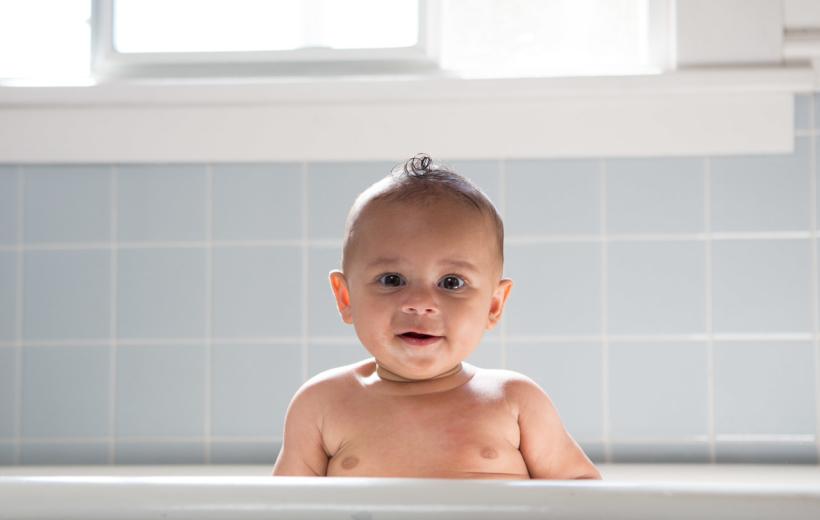Your baby is finally here and it is now up to you to set a routine for their day-to-day life.
This includes bathing. But when, how often, and how to bathe your child isn't as obvious as you might think. Here's what you need to know about keeping your baby clean, healthy, and happy.
The World Health Organization recommends that parents wait 24 hours to give their baby its first bath.
Hospitals used to bathe newborns shortly after birth, but research in the last 10 years has discovered that this stresses the baby and can lead to less successful breastfeeding early on.
Moreover, newborns are born covered in a natural greasy layer called vernix. Vernix acts like a natural antibiotic that protects the baby from harmful bacteria during and immediately after birth. It also keeps their skin moist. If you wash it off right away, that can increase a baby's risk of infection and cracked skin.
Therefore, doctors recommend parents wait to bathe their newborn until about 24 hours after birth.
After that, pediatricians recommend no more than three times a week for 10 to 15 minutes at a time.

"One to two times may be fine as well," says Dr. Rob Darzynkiewicz, MD, Chief Medical Officer of Hazel Health. "This will help make sure your baby stays clean. Doing it more than that can dry out the skin, which is very sensitive."
Over bathing can actually decrease the bacteria that naturally occur on your baby's skin. This can not only cause dry and irritated skin but in some rare cases, it can cause an infection. But not bathing your baby enough also has consequences.
Bathing your newborn less often than once a week could result in rashes between the folds of the baby's skin or in their diaper, Darzynkiewicz says.
So stick with the goldilocks range of one to three times a week.
For the first two weeks, or so, pediatricians recommend sponge baths. Two weeks is about how long it takes for the stump left from the baby's umbilical cord to fall off and heal. If you completely submerge your baby in water before the wound heals, this could increase the risk of infection or cause irritation, says Daryznkiewicz.
Also, if your baby is circumcised, pediatricians recommend sponge bathing until the circumcision site is healed, as well.
"The sponge bath should start with washing the face and working downwards until you are done," says Daryznkiewicz. "As you get comfortable you can extend the bath but you want to make sure your child stays warm."
As they get older, you can transition to a warm bath in a few inches of water. When choosing a soap, Daryznkiewicz suggests a scent and fragrance-free option, since scents can irritate sensitive skin or cause flare-ups of eczema.
Water safety is crucial, whether you're bathing a newborn or helping a preschooler wash their hair. Each year, an estimated 87 children drown in their homes and two-thirds occur in bathtubs.
"You should never be distracted for a second during bath time," says Daryznkiewicz. " It does not matter how deep the water. Turn off your phone and make a commitment to stay in arms' reach any time they are in the bath."
With time, children will be able to take on more of the responsibility of keeping clean. Even so, they should remain supervised until they have proven they can safely and effectively bathe or shower. This age may vary based on personality and maturity.
"Generally, a good time to start having a child bathe on their own is around when they turn eight [years old]," says Daryznkiewicz. "Until then, it is critical to watch your child very closely every time they are around water, especially at bath time."